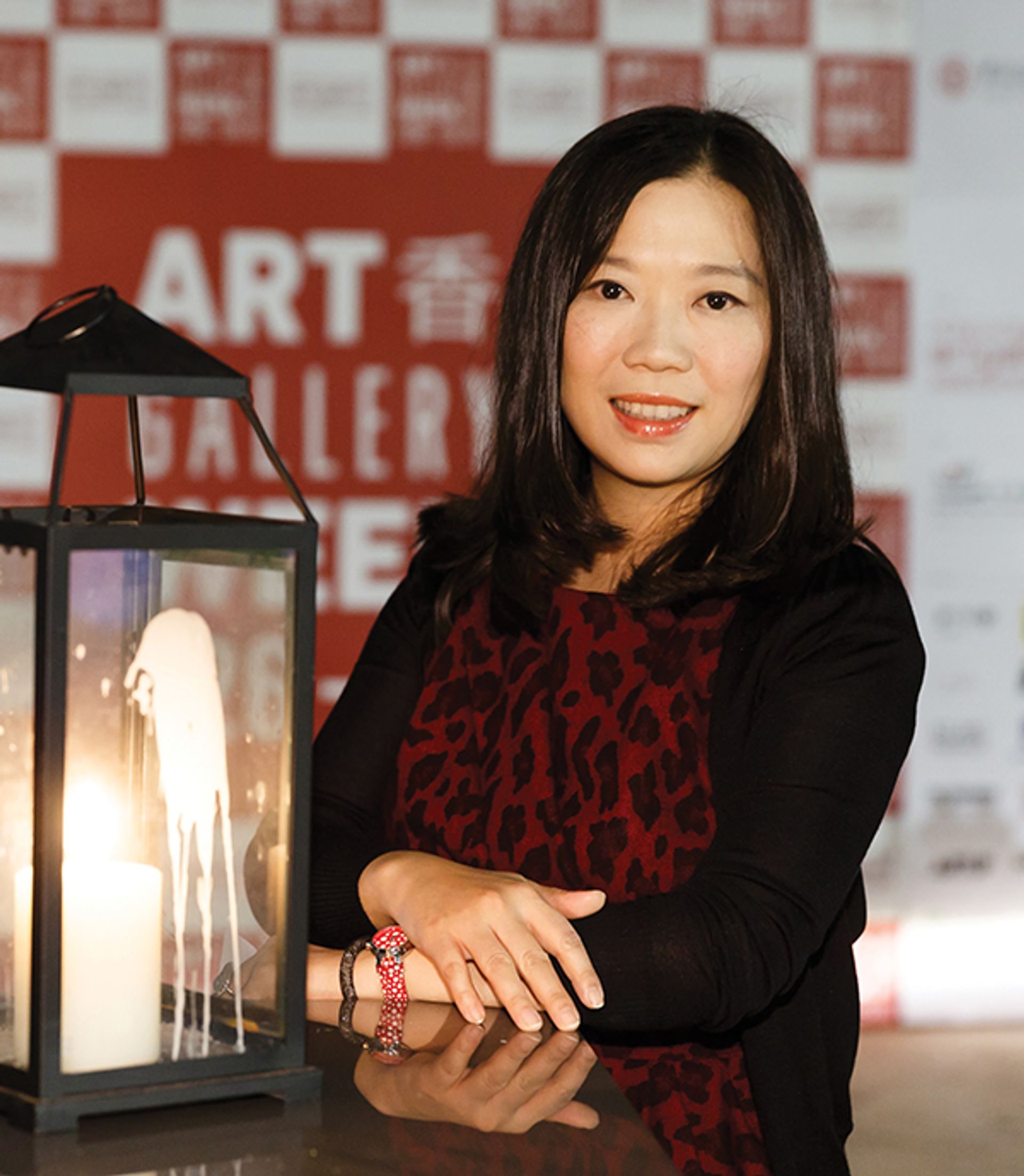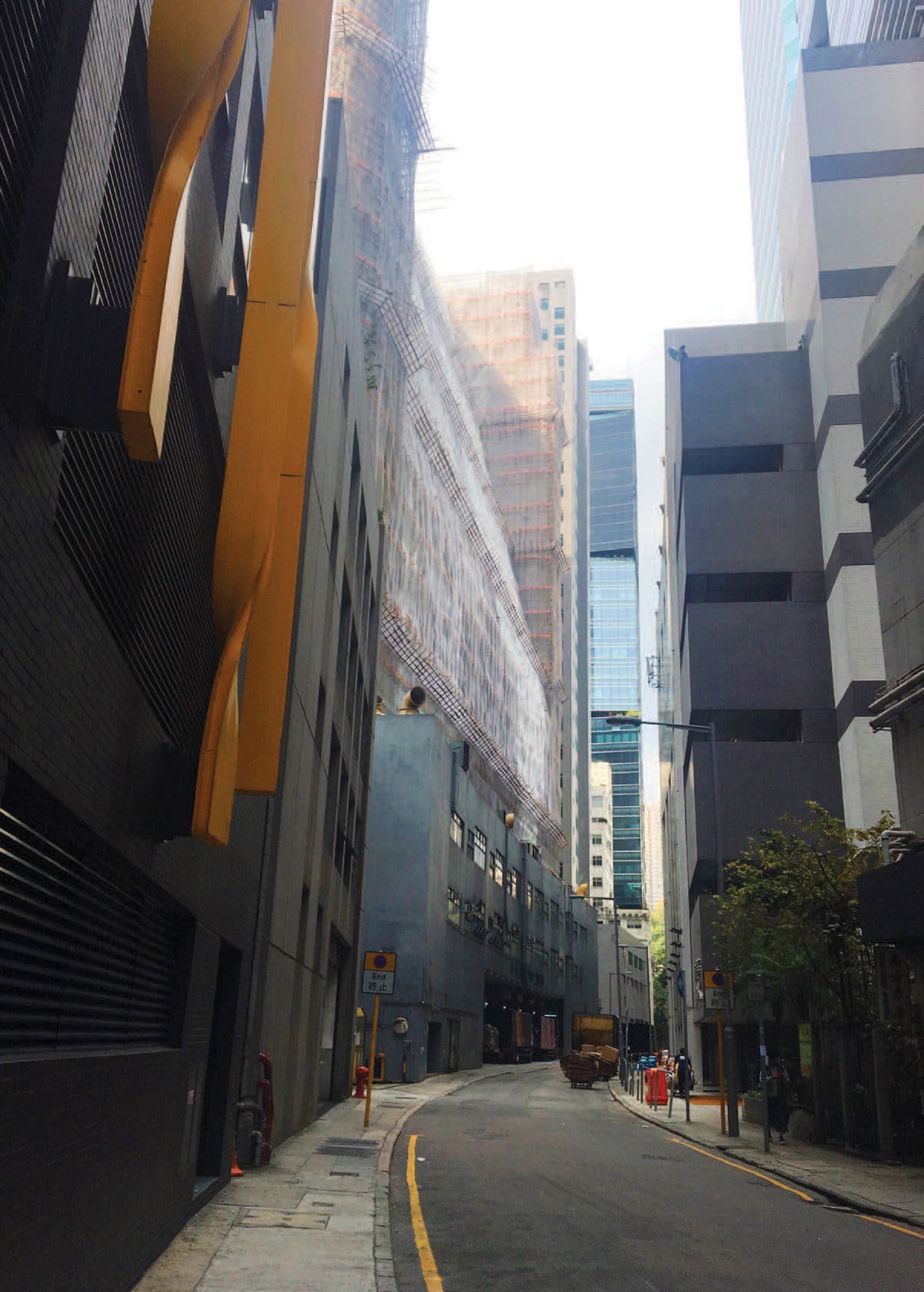Hong Kong’s new gallery hub, H Queen’s, starts filling up this month, with galleries including Hauser & Wirth, Pace and Pearl Lam joining earlier entrants David Zwirner and Tang Contemporary in the 24-storey high rise. Above the commercial artery of Queen’s Road Central, William Lim and his firm CL3 Architects have created expansive gallery spaces—a luxury in this dense city.
The rash of openings, coinciding with Art Basel in Hong Kong this month, is the largest single influx of mostly Western galleries the city has experienced. But it is not the first time—similar waves of galleries came in 2008, when Art Hong Kong was launched, and later in 2013, when it was bought by Art Basel.
Though this infusion brings new energy, blue-chip dealers selling established Western artists to Asian collectors also threatens to overwhelm the city’s small but dynamic community of local artists and galleries. Privately, many in Hong Kong complain that the new arrivals are opportunistic and insensitive to local nuance. And throughout greater China, there is concern that the big global brands will poach the best artists, directors and collectors from the burgeoning galleries.
Nascent scene
“Hong Kong itself is very small, with an even smaller art population,” says Amanda Hon, the managing director of Ben Brown Fine Arts, which opened in Hong Kong in 2009. “As a community, we tend to be more collegial than bigger art cities such as London and New York. It is vital to the survival of the Hong Kong art scene that newcomer galleries understand the larger mission, to promote and aid fellow gallerists and grow Hong Kong into a more dynamic art scene. The art scene here is nascent and needs to be nurtured to allow artists, collectors and gallerists to flourish.”
The anticipated arrival of major institutions, such as M+, part of the West Kowloon Cultural District, and the Central Police Station, will also boost the scene, heretofore rooted in independent non-profits like Para Site, Asia Art Archive and Videotage.
When Brown first opened here, Hon says: “There were no other international galleries or great museums here, and no Western art was being shown; everything was mostly Asian.” Now, she says: “The challenge from increased competition stems from the aggressive international galleries without the commensurate uptick in consumption in the local market.”
Hong Kong was home to a booming, if often spurious, antiques trade from the 1960s, selling genuine antiquities and Chinoiserie tat to Western collectors and tourists. Global auction houses established offices and sales—Sotheby’s in 1973 and Christie’s in 1986. As the mainland opened up and its contemporary art developed from the 1980s, Chinese art (of varying quality) joined the offerings along Hollywood Road, still mostly selling to Westerners. Now, while those markets remain, the dominant script has flipped, with galleries eager to sell Western art to newly minted mainland collectors, attracted by the Special Administrative Region’s attractive tax situation. Yet promoting Hong Kong-based artists has remained an afterthought.
“Hong Kong is at the meeting point of the 21st century’s most important conversation, which is: how can East and West best communicate with each other? How does the West reach China, and China engage with the world? This is not just the case in the art world but in many industries based in Hong Kong,” says Henrietta Tsui-Leung, who in 2006 founded Galerie Ora-Ora, focused on ink works and now relocated from Shin Hing Street to H Queen’s. “Hong Kong has distinct characteristics, but we all operate in a global market,” Tsui-Leung says. “Hong Kong artists are participating in this global market—they bring a unique voice, just as our city does.” She points to Samson Young, whose presentation for last year’s Venice Biennale, Songs for Disaster Relief World Tour, is on view at the M+ Pavilion until 6 May.
Tsui-Leung, who started the Hong Kong Art Gallery Association in 2012 with the German dealer Karin Weber, adds, “The definition of what is local is a complex one. Many galleries based in Hong Kong are owned by Westerners who saw potential here long ago and committed to it. Equally, many galleries headquartered overseas have decided to actively invest in Hong Kong.”

Henrietta Tsui-Leung, of Galerie Ora-Ora, which is moving to H Queen's alongside Pace, Hauser & Wirth, and David Zwirner Louis Cheuk
Local flavour
The city has a few galleries owned by Hong Kong nationals, like Ora-Ora and Gallery Exit, which almost exclusively show Hong Kong artists. More, though, are hybrids—such as Edouard Malingue and De Sarthe—which opened or moved to Hong Kong early on and have since opened branches on the mainland, representing even balances of Hong Kong, mainland and other Asian and Western artists.
Pascal de Sarthe recalls visiting Asia in 1981 from Paris: “It was obvious to me that with the presence of the auction houses in Hong Kong, the city would attract more Asian and Western galleries. Opening a gallery in Hong Kong [in 2010], our focus was to show masterpieces by artists such as Zao Wou-Ki, Chu The-Chun and Sanyu, as well as Western Modern and post-war paintings by Picasso, Miró, Calder, De Kooning, Mitchell and Asian collectors.” The gallery has now expanded into contemporary Asian art.
The 2018 H Queen’s influx differs from that of a decade ago: it is more abrupt, dominated by big names, and the stakes are higher. “On the surface, it seems there is a first and second wave of foreign galleries, but what that does not take into consideration is the lack of appropriate [high-ceilinged, temperature-controlled] gallery space in Central,” Hon says. H Queen’s fills that hole and has provided the impetus for galleries “to take the leap of faith”.
David Zwirner believes a decade of international fairs has already built Hong Kong into a receptive and globalised market, rendering localisation optional. “We have to thank the first wave, because they certainly were the pioneers and opened up an audience for Western art. There’s much higher acceptance of art from the West.”

Wong Chuk Hang is a gritty industrial neighbourhood in the South Island Cultural District de Sarthe
Demand and supply
Alongside H Queen’s and Pedder in Central, distinct clusters are congregating around South Island and West Kowloon. “When Ben [Brown] was looking… the only location he found suitable, with high ceilings, was the Pedder Building,” Hon says. “Ben’s was the first gallery to open in the Pedder. After that Simon Lee, Gagosian, Hanart and Pearl Lam joined us.” Lehmann Maupin also arrived in 2013. “Those galleries worked to escalate the Pedder to the level it is now,” Hon says.
“It is a complex situation,” de Sarthe says, with Hong Kong established as an Asian art hub and a “market driven mostly by foreign galleries and auction houses that believe you must be located among luxury international retail stores to survive in Hong Kong”. This comes, de Sarthe says, “at an absurd cost and fails to acknowledge that Hong Kong has matured as an art hub. Over the years, it has generated a base of 30 or so art galleries in the industrial neighbourhood of Wong Chuk Hang [in the South Island Cultural District]”, including Beijing’s Pekin Fine Art, London’s Rossi & Rossi, Taipei and the Shanghai import Longmen Art Projects, alongside local dealers Blindspot and Empty Gallery. “This area is the real Hong Kong art district,” de Sarthe says.
Leng Lin, the Seoul, Hong Kong and Beijing president of Pace Gallery (which launches a second Hong Kong location in H Queen’s this month), praises the city’s business freedom. Since Pace opened in Beijing in 2008, it has recruited many of China’s top artists, then launched last year in South Korea. “Hong Kong has an imagination that boosts culture by the force of business, while Beijing has an imagination that boosts business by the force of culture.” He says global interest pushed galleries on the mainland to mature quickly over the past decade. “International galleries become more localised, while local galleries become more globalised.”
Tsui-Leung is moving to H Queen’s in part because she believes the international blue-chip galleries will bolster business for local dealers. “Competition is a great drive for success,’ she says.


